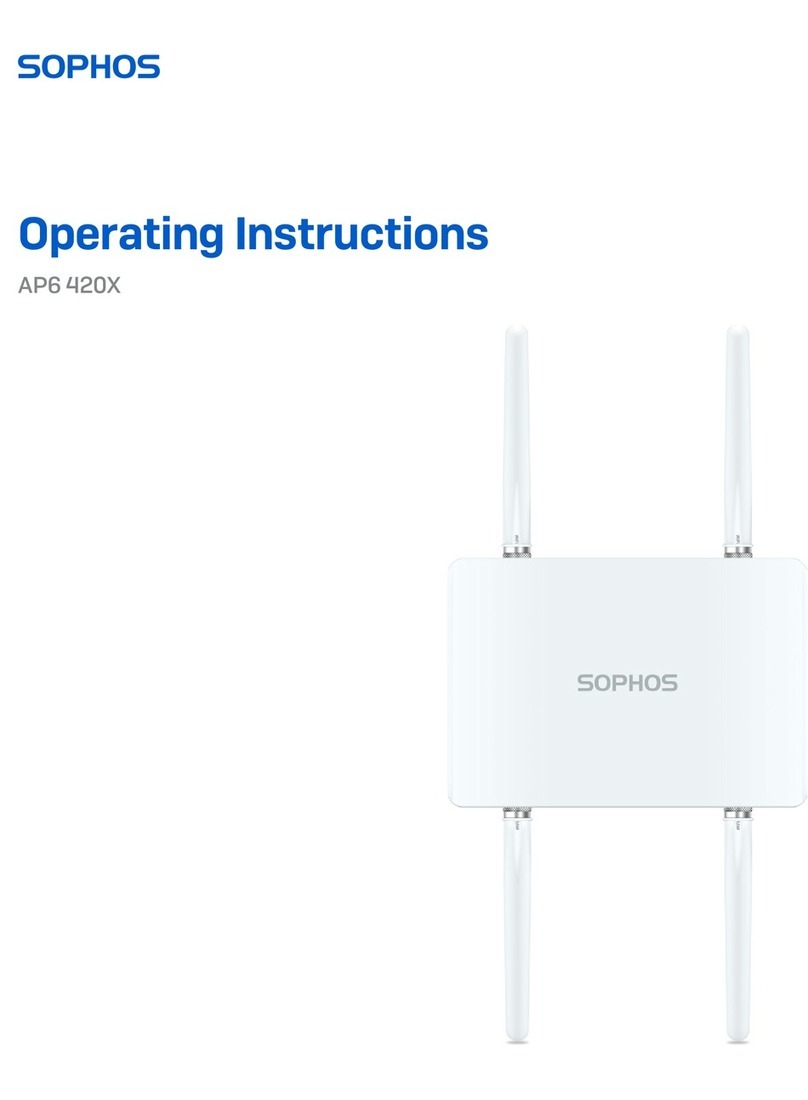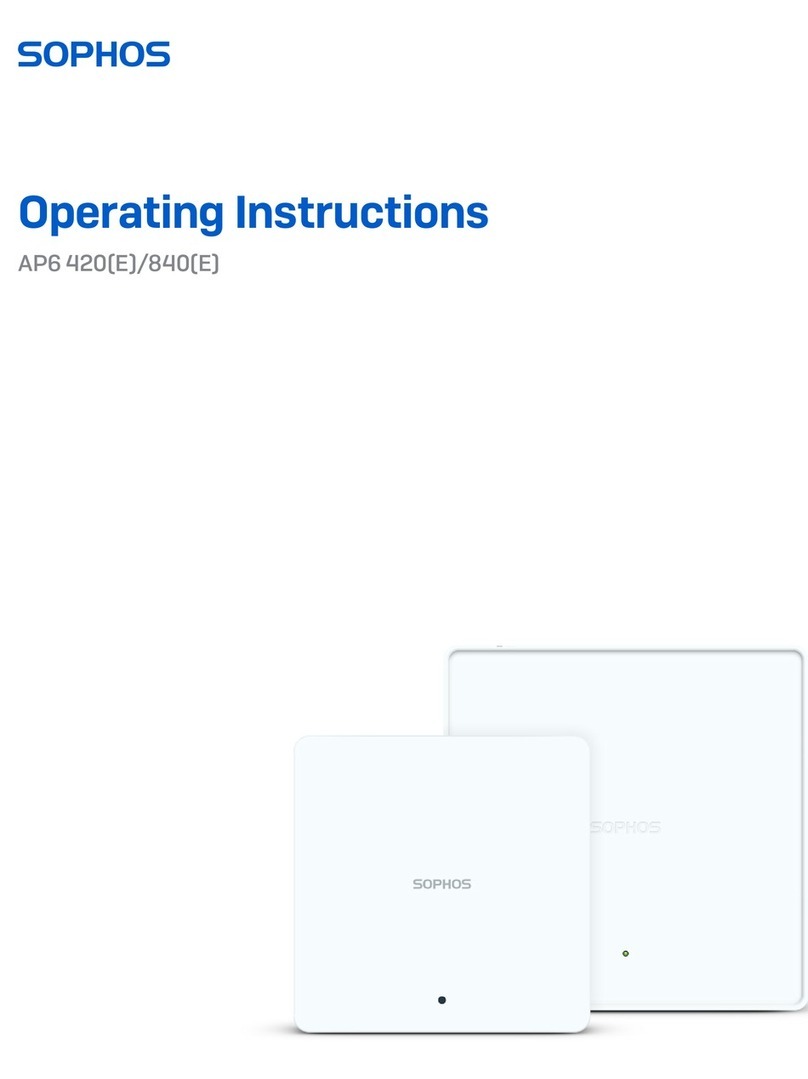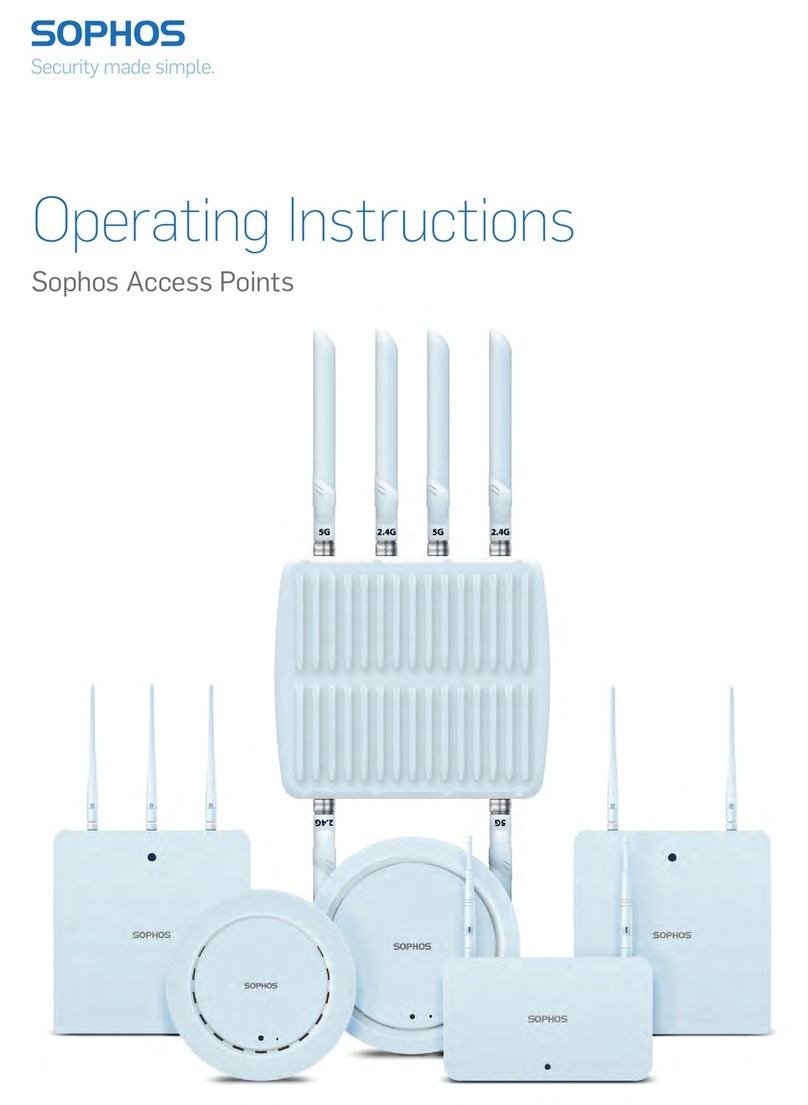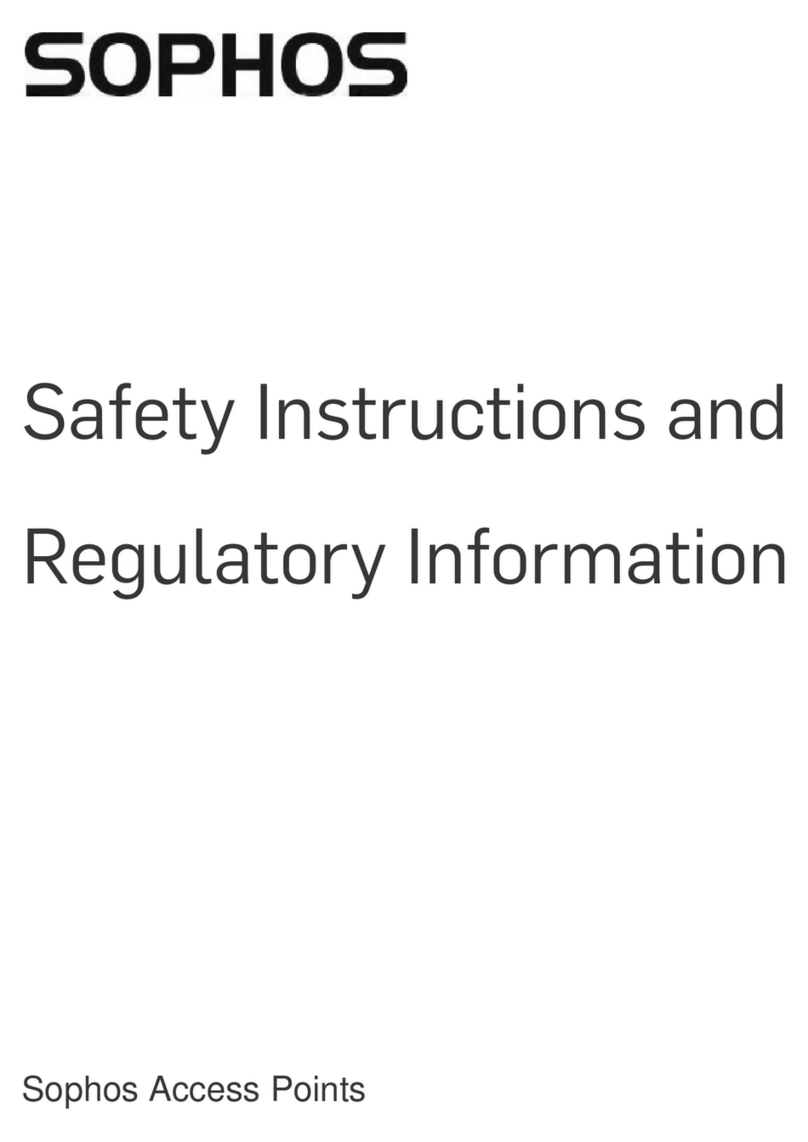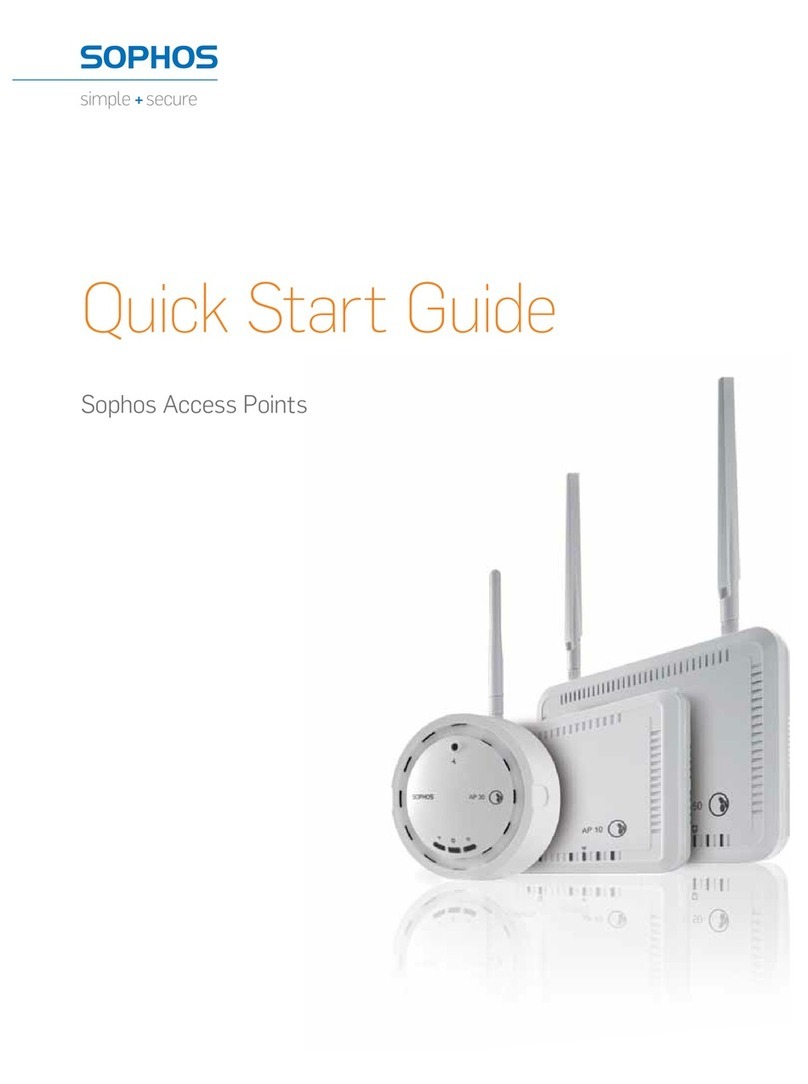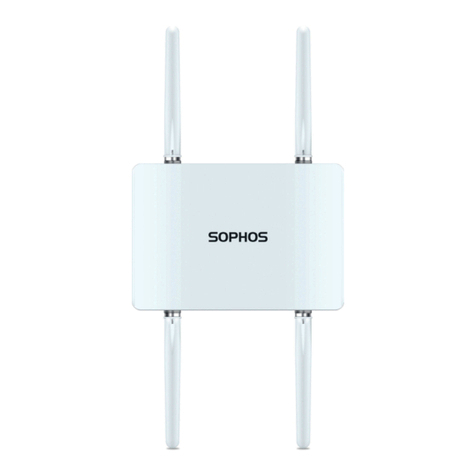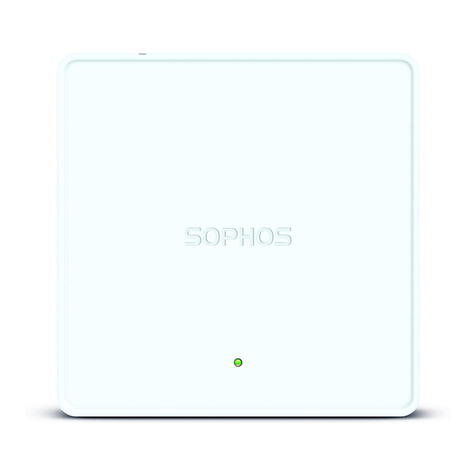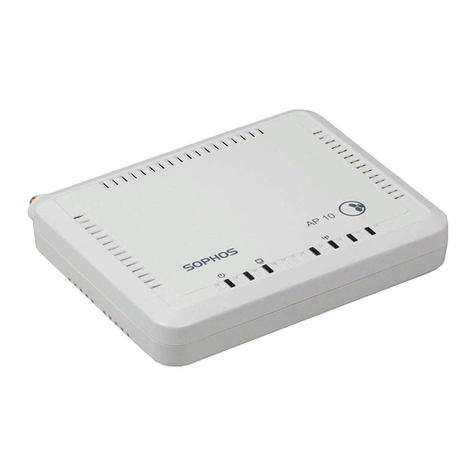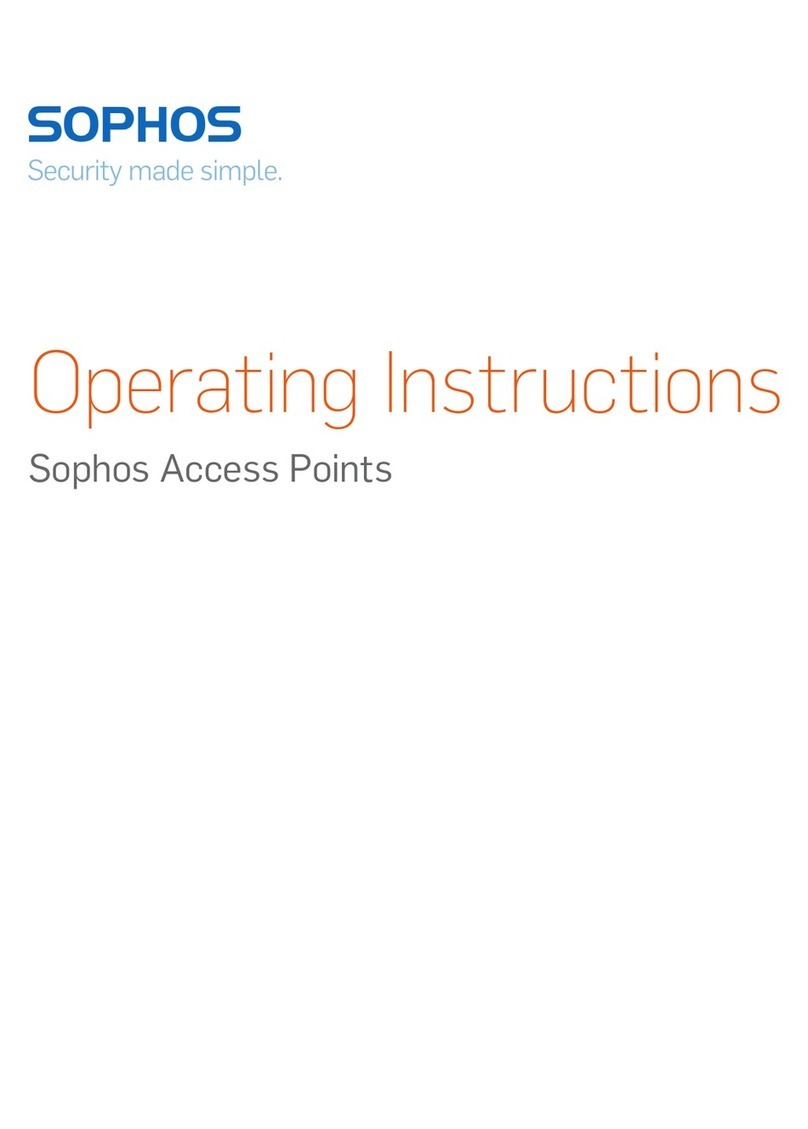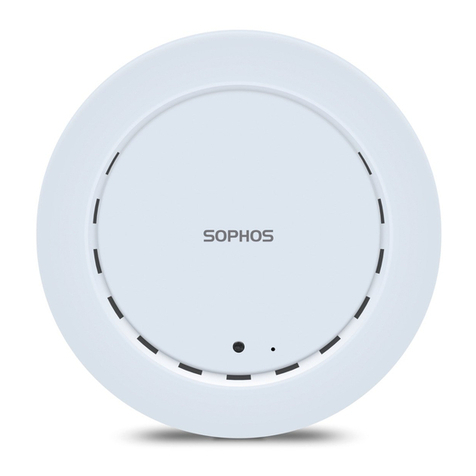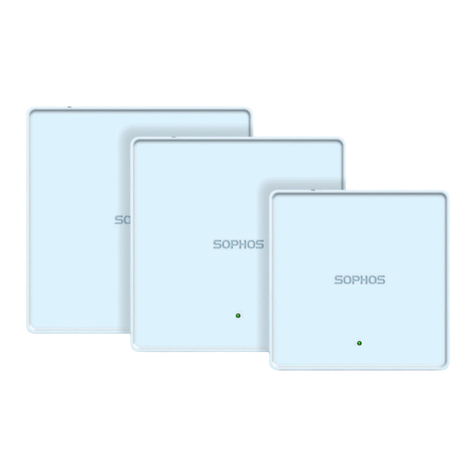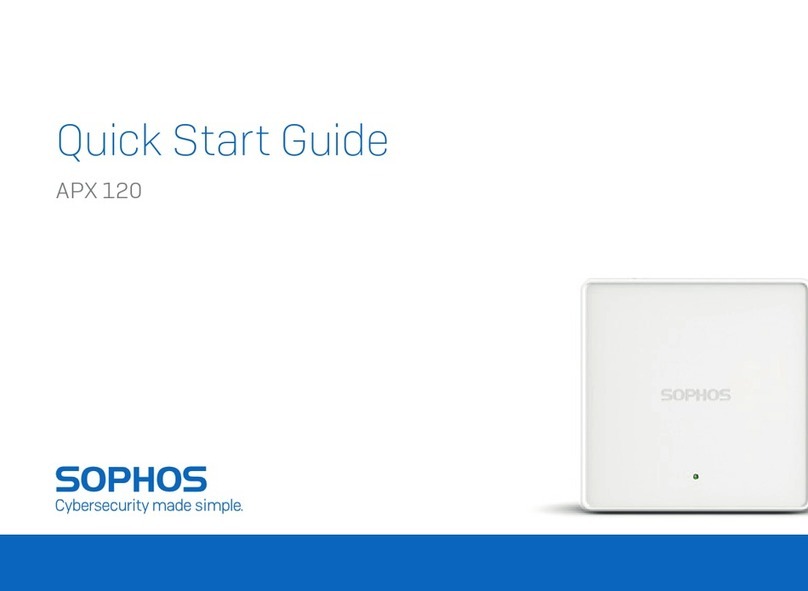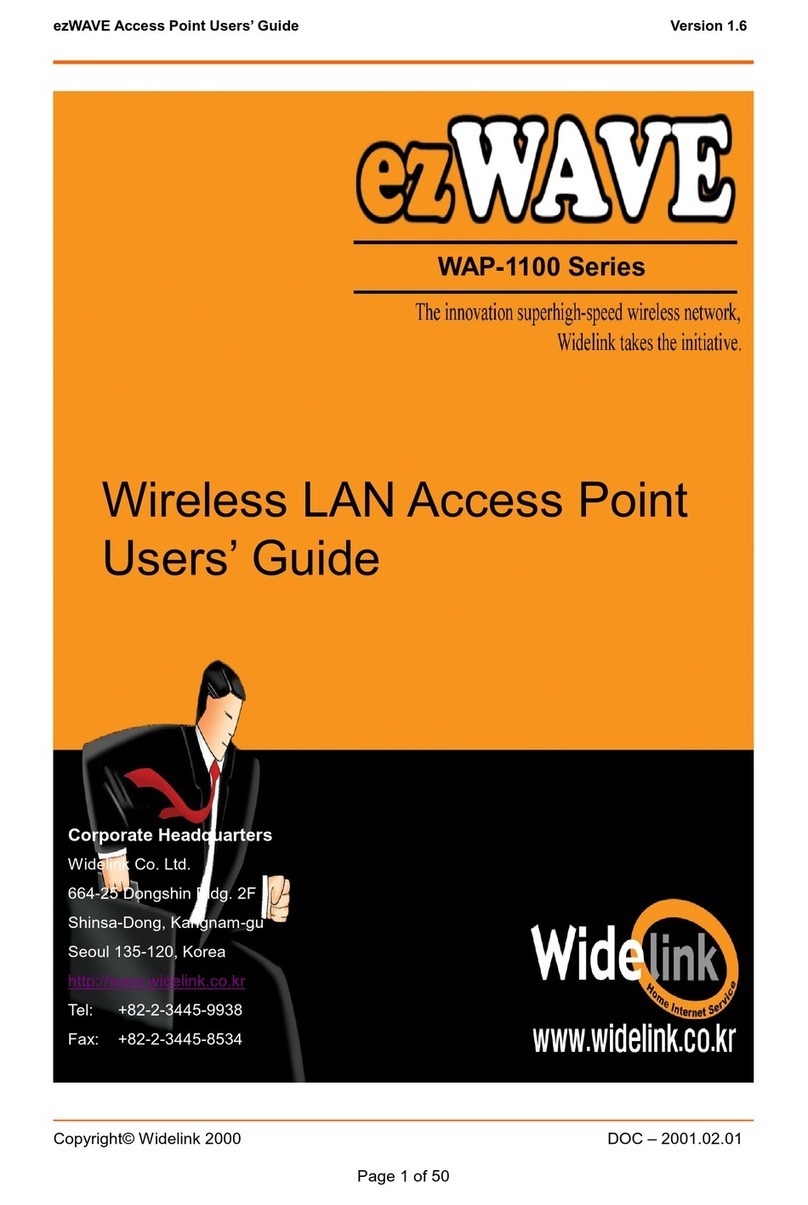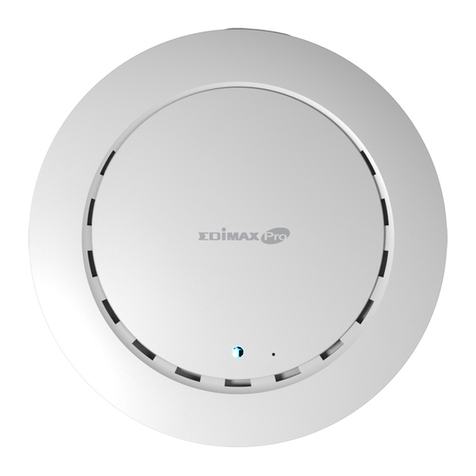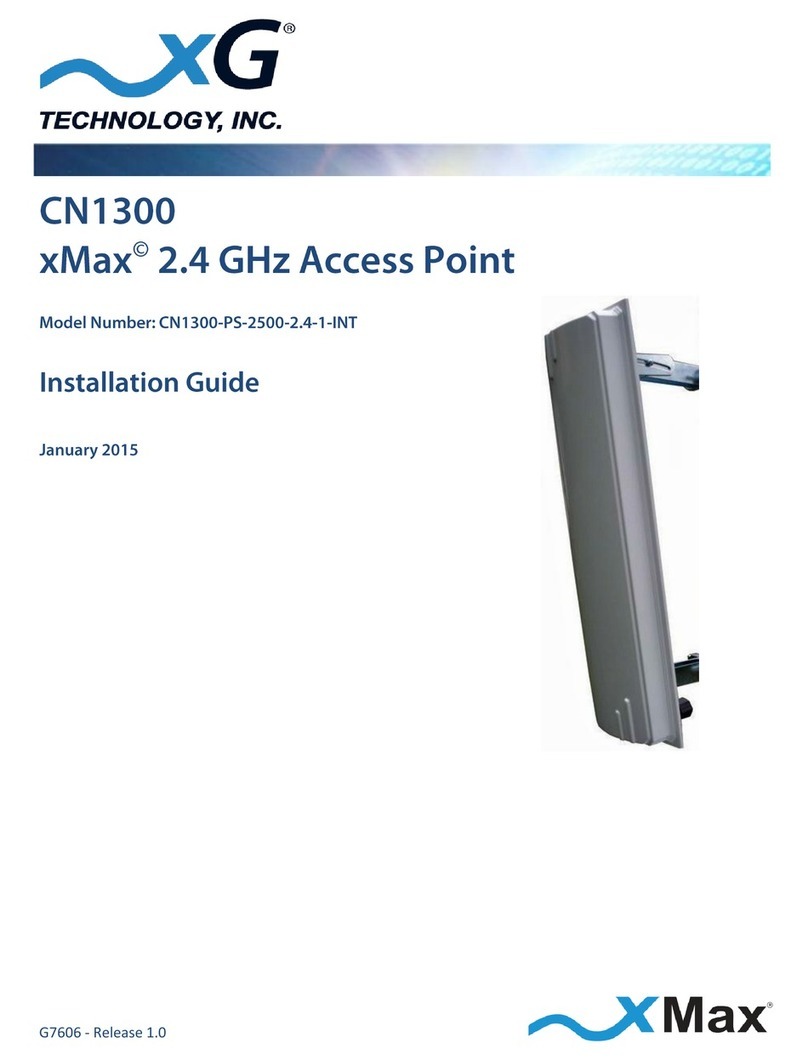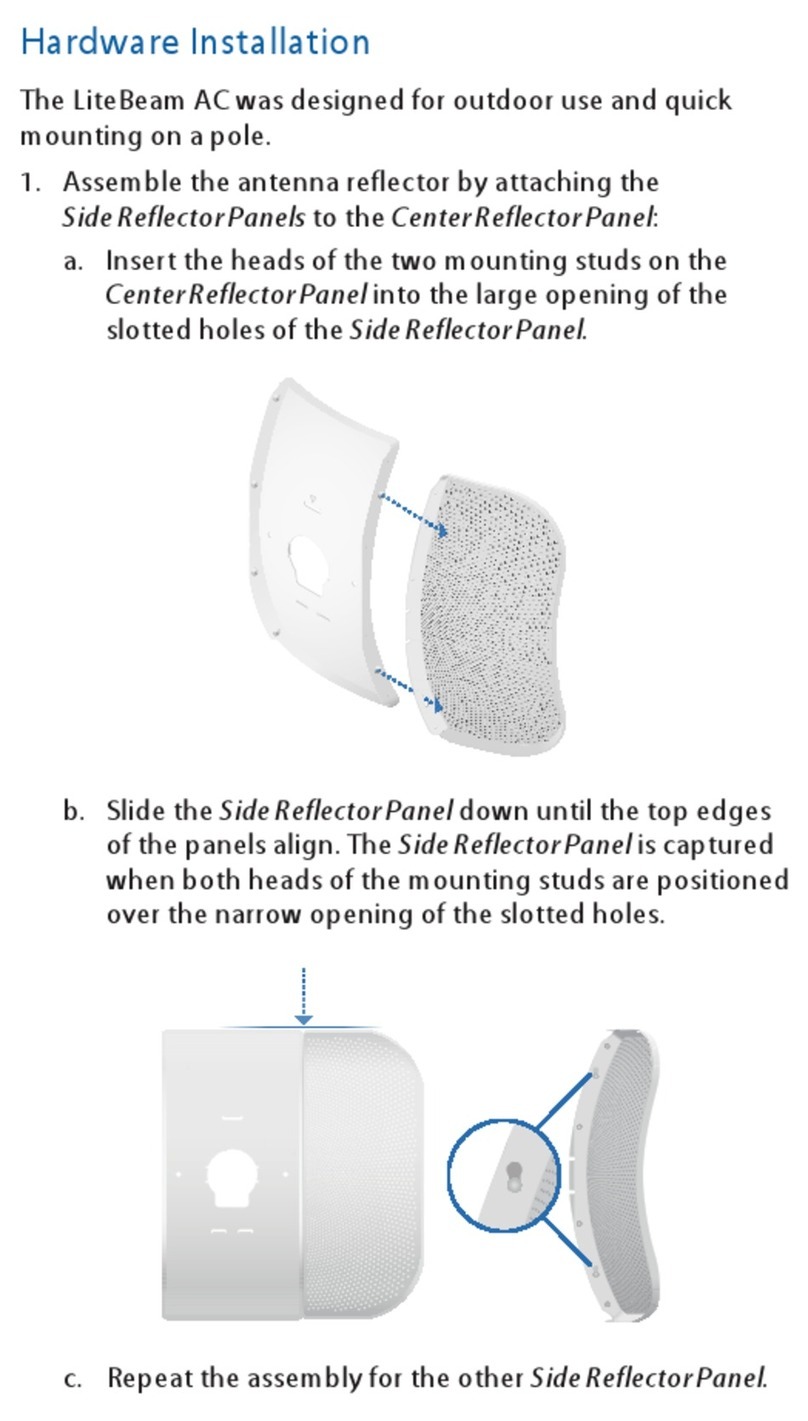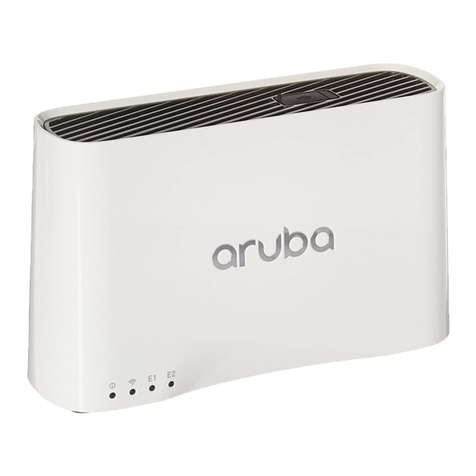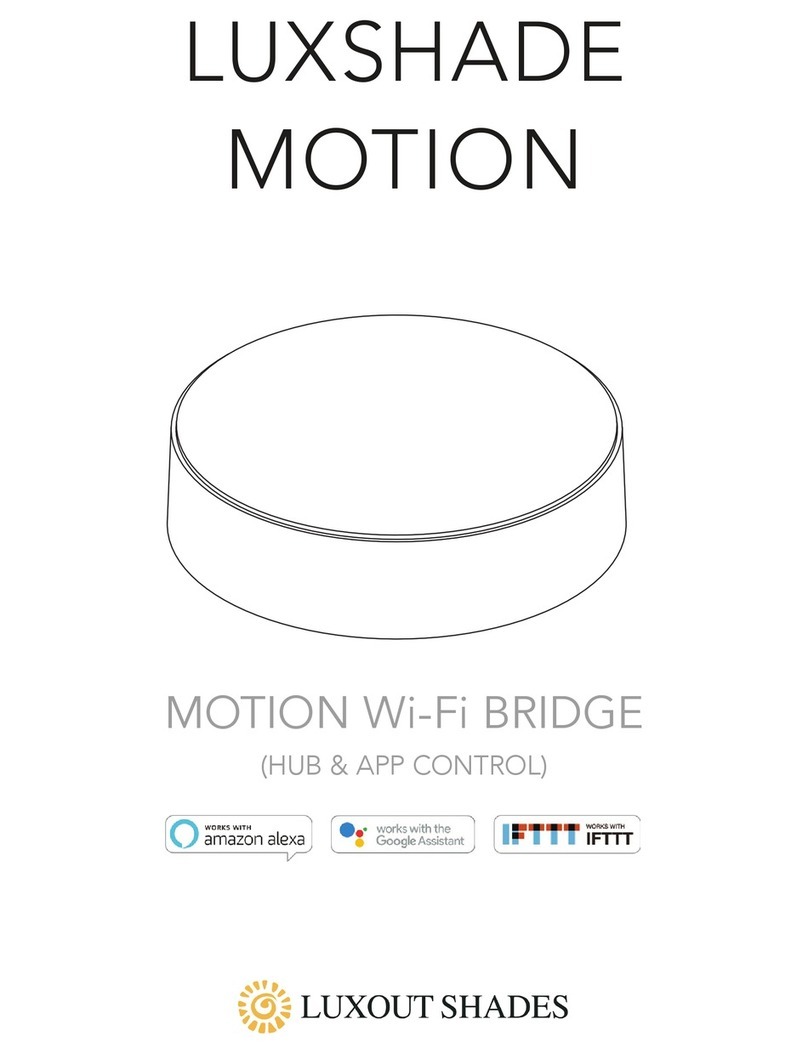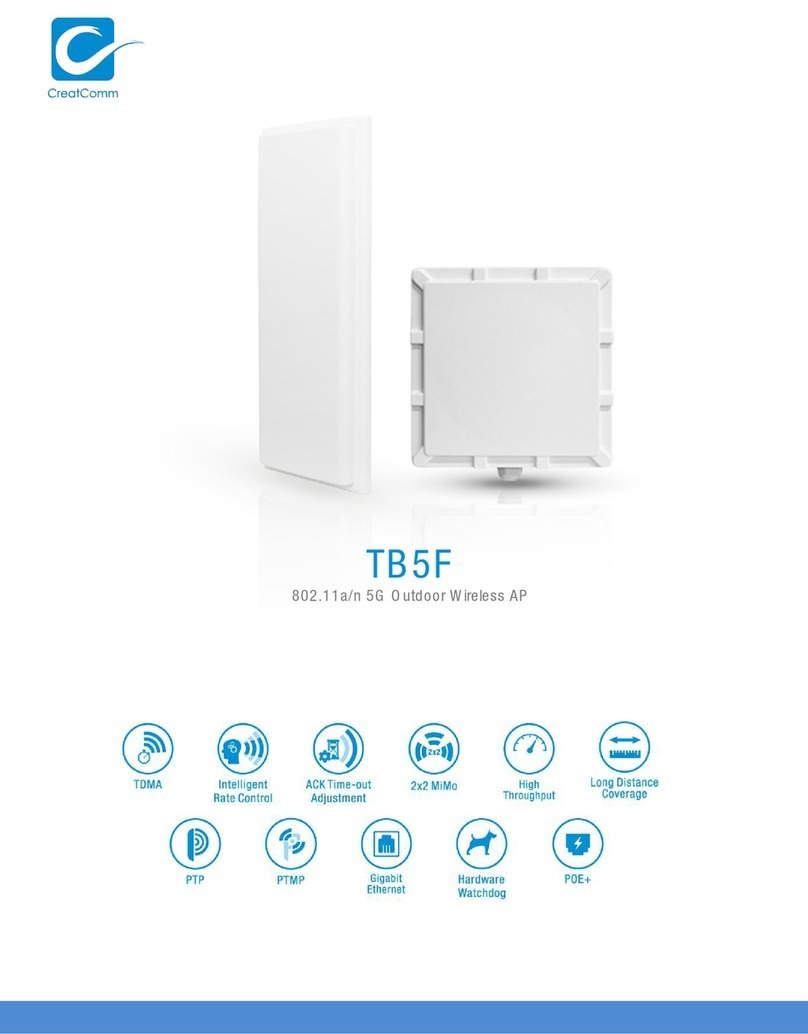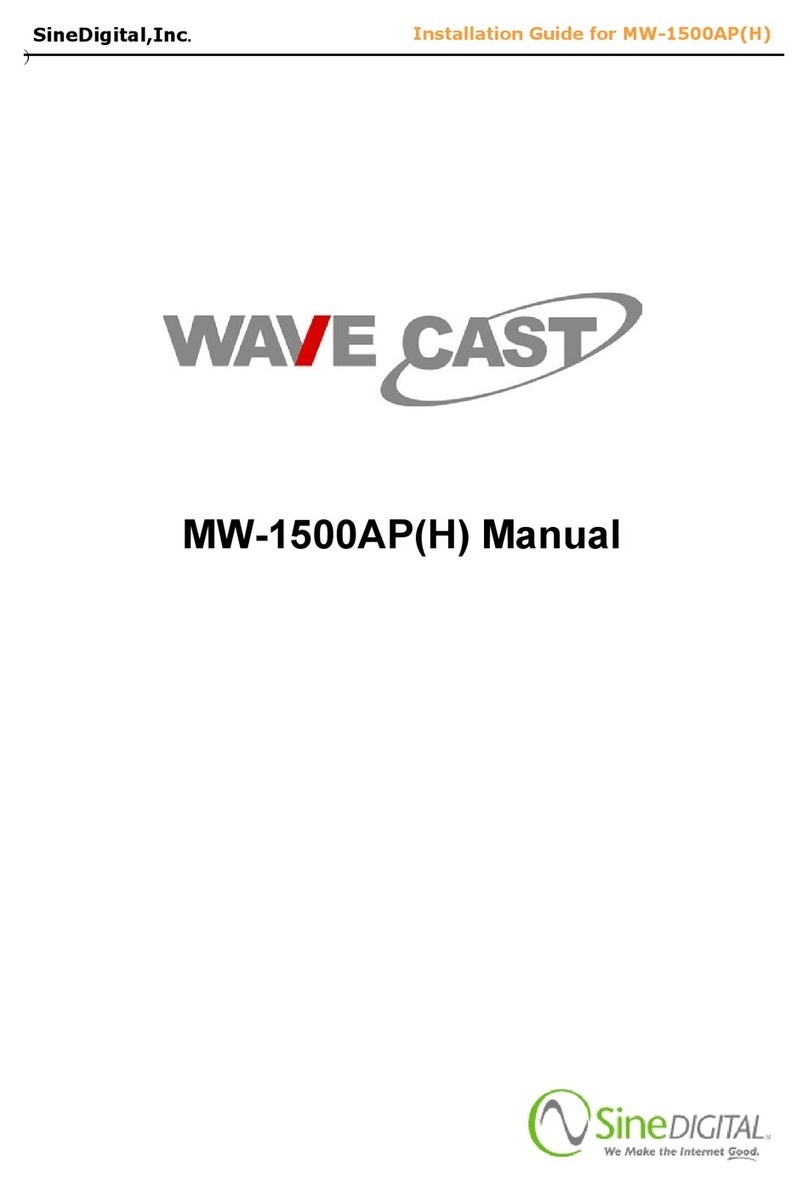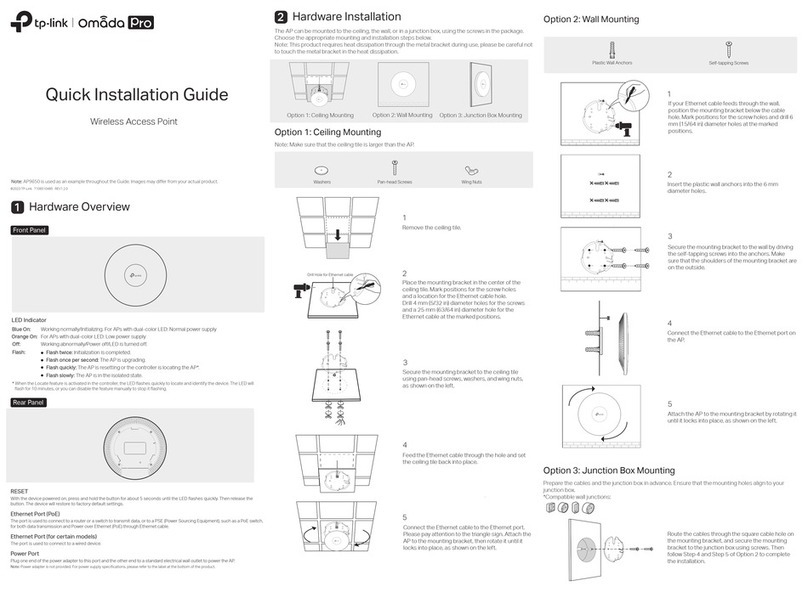
3APX 320/530/740
Operating Instructions
LED Status
LED on Front
Off Off AP is off or reboot started.
Green Solid Normal operation.
Flashing AP is booting & connecting to wireless controller or applying configuration*.
Amber Solid AP has no connection
Flashing AP is not claimed by wireless controller
Red Solid Error, no wireless controller found. AP will reboot (if not yet claimed
by a controller). Check network connection if error persists.
If reset button pressed: AP preparing configuration reset
Flashing slowly Configuration reset in progress*
Flashing fast Firmware update in progress
Note: Do not disconnect from power, nor reboot or reset the device
When the device connects to Sophos Central or Sophos Firewall for the
first time, it might take more than 15 minutes to update firmware.
* Your AP should recover from this state after a maximum of 5 minutes.
Connection and Configuration
The initial connection of your access point to your network and the wireless controller is
described in the APX Quick Start Guide which was been shipped with your device or is
available under www.sophos.com/get-started-ap.
For the access point to communicate with Sophos Central servers the following ports will
need to be open on your firewall:
Ì443 (HTTPS)
Ì80 (HTTP)
Ì123 (NTP)
After successful connection you can start your initial configuration.
Setting up your access point in Sophos Central
You will need a Sophos Central account to manage your access points from Sophos
Central. Please go to https://central.sophos.com to sign in under your account or create a
new account.
After signing in select Wireless from the popup screen or click on Wireless in the left
navigation to get started.
Follow the Onboarding Wizard to register your access point.
For more information, please see the Sophos Central Admin Help.
Setting up your access point in XG Firewall
Please note: support for the APX 320/530/740 will be added in a maintenance release of
v17.5.
Instructions on how to set up a wireless network and add access points in XG are provided
in this video https://vimeo.com/271657858
